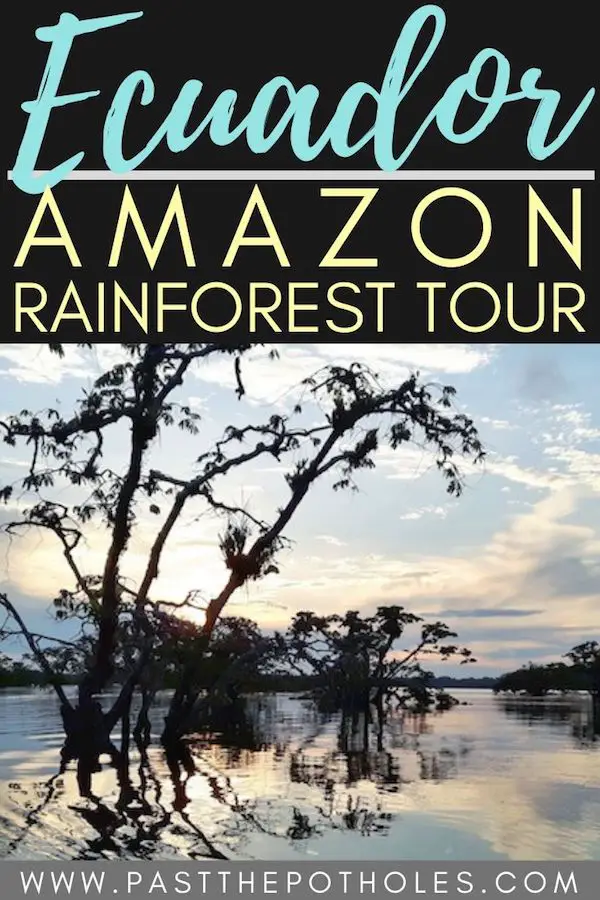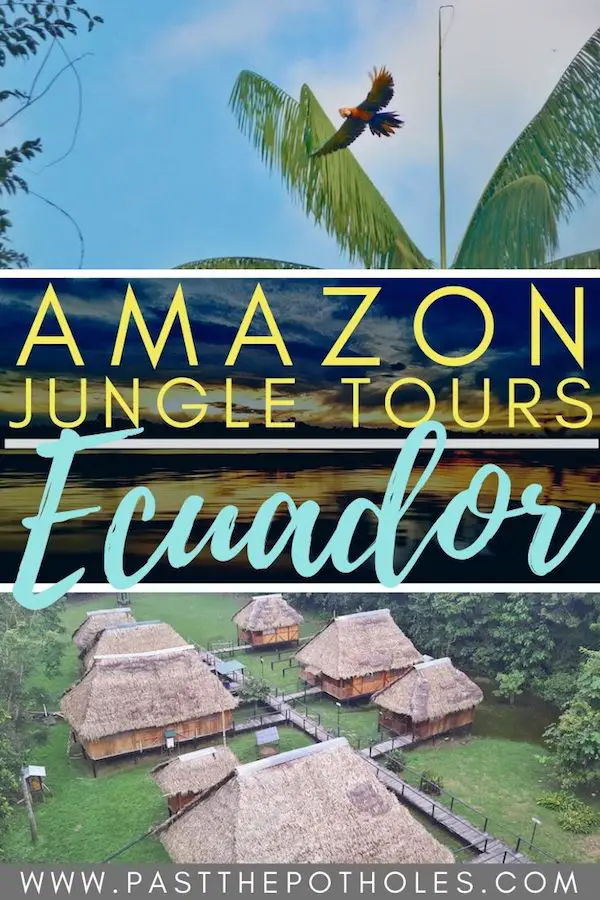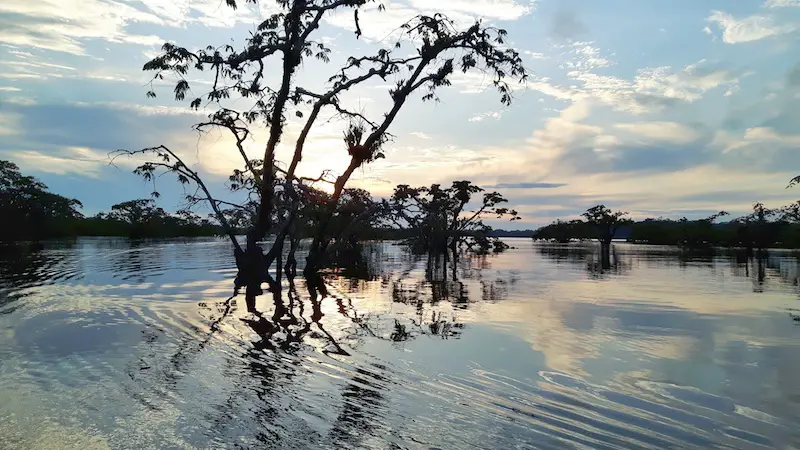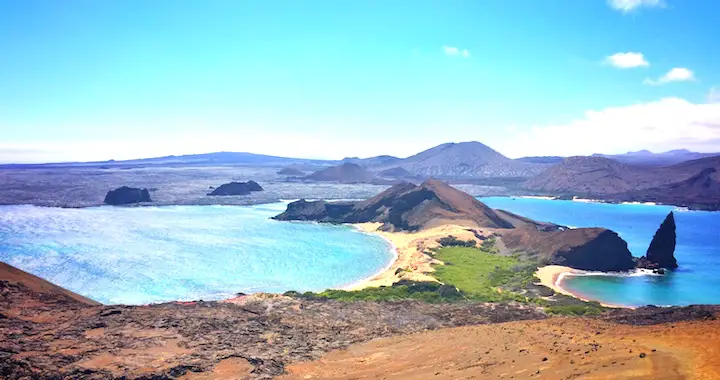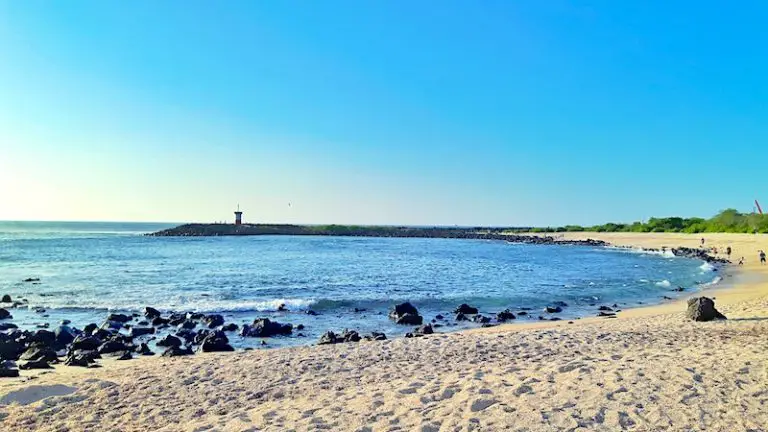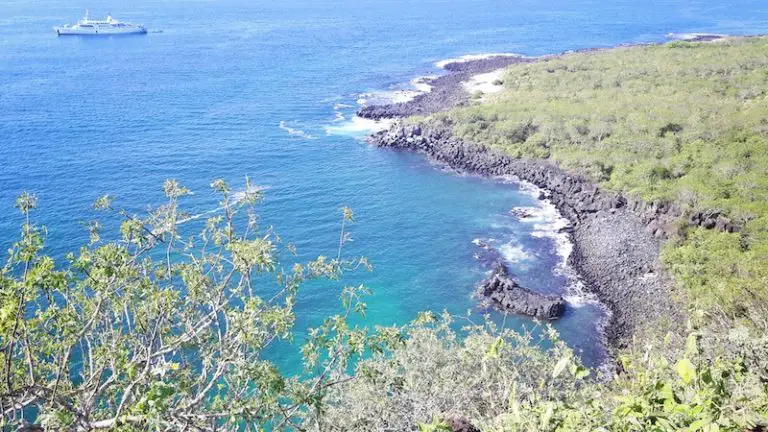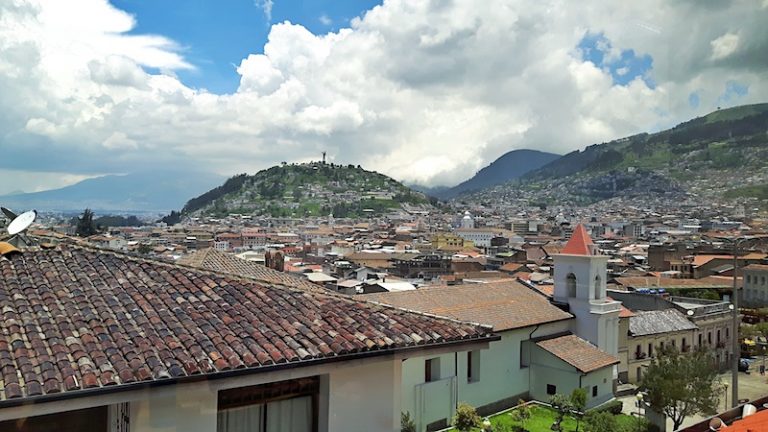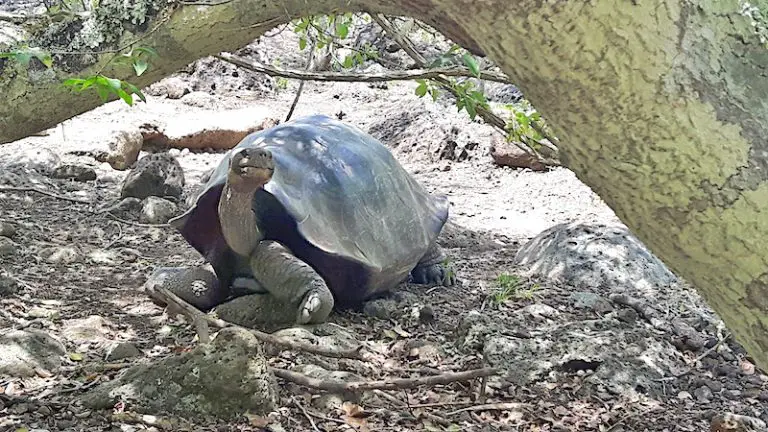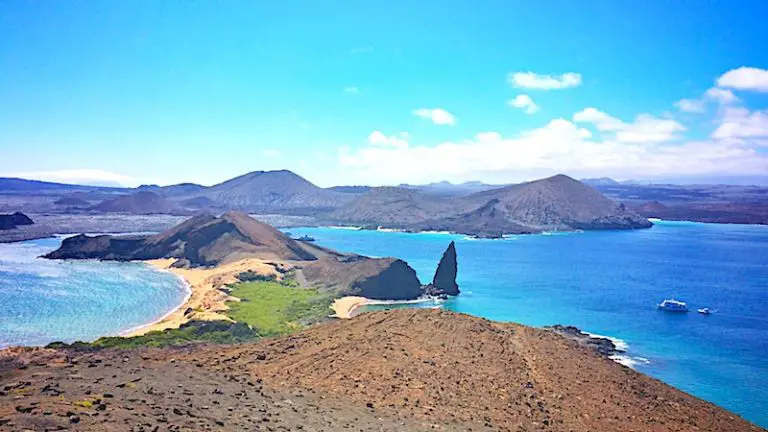Ecuador Amazon Rainforest Tours: Our Personal Experience (and tips)
Some links in this post may be affiliate links. If you click on them we may make a commission from qualifying purchases at absolutely no cost to you. Read our full Disclosure Policy here.
For such a small country, Ecuador really packs a punch! Where else could you hike a volcano, swim with sharks and explore the Amazon rainforest on the same trip?
Ecuador is actually one of the best places to access the Amazon Rainforest as it is more easily accessed and boasts incredible biodiversity – the most biodiverse area in the world in fact.
Most people visit Ecuador for the Andes Mountains or, of course, the Galapagos Islands but it’s a shame to skip the Ecuador Amazon region. We finished our time in Ecuador with a four-day Amazon rainforest tour in the Cuyabeno Reserve and loved every second of it!
However, planning a jungle adventure can be confusing. There are so many different lodges in different areas at vastly different prices. Let us help you figure out the best options for Amazon jungle tours, Ecuador.
Prefer an organized tour?
If you would rather the comfort and ease of an organized trip, G Adventures has this
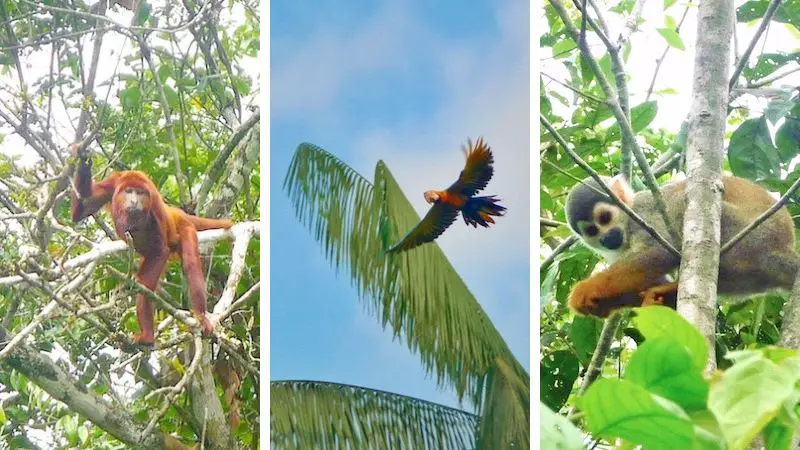
Table of Contents
Choosing the Best Amazon Rainforest Tour for You
Amazon Rainforest Tours vs. Amazon River Cruise
The first decision is whether to take a river cruise or a jungle tour. While I’m sure a river cruise is amazing, the price is exponentially higher. Also, we saw a huge amount of wildlife when we left the waterways and got on the land.
We would definitely recommend getting up close and personal with the wildlife at an Amazon rainforest lodge. The wider rivers are that much harder to see wildlife in the trees.
However, if luxury and comfort and important, or perhaps you have mobility issues, an Amazon cruise just might be your best option. There are two Amazon cruises that operate in Ecuador. Read about each here.
Cuyabeno Wildlife Reserve vs. Yasuni National Park
There are two main access points to visit the Amazon rainforest in Ecuador.
- Cuyabeno Wildlife Reserve is a much more budget option and delivers a better probability of some larger animals such as pink river dolphins. There are more lakes and waterways.
- Yasuni National Park is more expensive with much higher quality lodges. It also has a higher number of endemic species than Cuyabeno.
Which area you choose will probably depend firstly on your budget and secondly what creatures are top of your list to see.
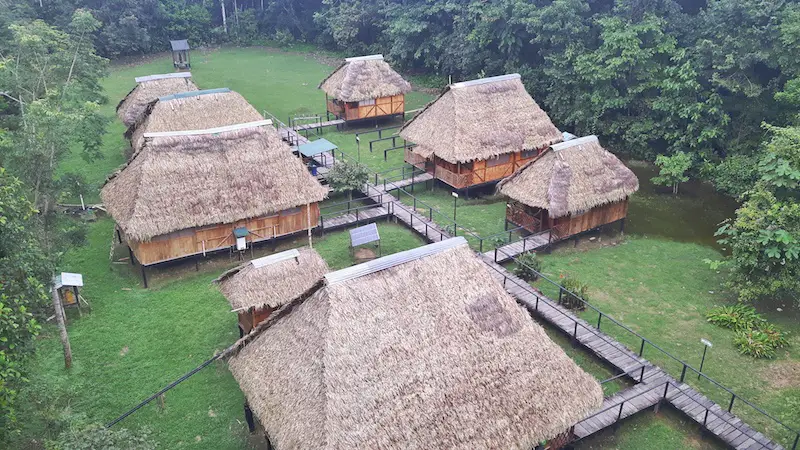
Which are the Best Ecuador Amazon Lodges?
Again this depends on your priorities and budget. We were fine to ‘rough it’ and deal with the insects and lack of comfort but there are definitely a few things to consider besides comfort.
- Location: We would recommend choosing a lodge near Laguna Grande. Some are very close to the Cuyabeno Bridge at the town. They will advertise the reduced transport time and tell you this means more time for tours. In reality, the tours will require travelling all the way to near the other lodges. Also, the transportation to and from the lodge was when we saw the most wildlife!
- Size: I had originally wanted to book Caiman Lodge but was happy we didn’t. They had the largest group by far made mostly of single backpackers. It is a great choice if you are hoping to meet fellow travellers and have fun. It’s not a great choice if you’re hoping for the silence of the jungle and lots of wildlife sightings.
The Best Amazon Jungle Tours, Ecuador
Our top three picks for an Ecuador adventure in the Amazon.
- Tapir Lodge has a great reputation as one of the higher-end lodges in Cuyabeno. It looked really nice every time we passed it.
- Dolphin Lodge has the perfect location for dolphin lovers.
- A 5-day tour is the best option for those who want to see as much as possible.
These are our top suggestions for Amazon rainforest tours (prices include accommodation, meals and tours):
What to Pack for your Ecuador Amazon Trip
The Ecuador rainforest is hot and humid year round. While the rest of the country has distinct wet and dry seasons, you should always expect rain in the Ecuador jungle.
Despite the heat, staying covered is essential as there is a crazy high number of poisonous and venomous creatures to discover during trips to the Amazon Rainforest. Ecuador is a place where the right clothing makes a difference!
Our Top Rainforest Packing Tips:
- Only pack light, quick-dry performance fabric clothes. Everything will be damp from the moment you arrive either from sweat, rain or just the extreme humidity. Heavier fabrics don’t stand a chance and will be extremely uncomfortable.
- Wear long sleeves and long pants. We are not the kind of people who usually suggest this so take note. While many recommend long pants while hiking to protect from bugs, scratches and the sun, we always wear shorts and tank tops to stay cooler. However, it is really important to stay covered on Ecuador jungle tours. Just about everything is poisonous and mosquitoes are unbelievable.
- Take something warm and dry for the evenings. Something like leggings or jogging pants with a long-sleeved t-shirt is perfect to put on when you return each day. Wear the same thing each night.
- Use as few clothes as possible. I had one daytime, adventure outfit and one evening, comfortable outfit. Everything else stayed tucked away in my backpack. Whatever you wear in the jungle will be damp, sweaty and muddy by the end so you may as well reduce the amount of laundry needed.
- Comfortable walking shoes and a rain jacket are not as important as you think. You’ll need something for the first and last day, but an excellent rain poncho and rubber boots are provided. They’ll do a better job than anything you have!
What to Pack for an Amazon Adventure:
- Long-sleeved, loose fitting shirt: Keep covered but don’t overheat with quick-dry, sweat-wicking fabrics.
- Hiking pants {his and hers}: Legs should be covered for protection but you’ll want a performance fabric over cotton or other clothes.
- Thin, long comfortable pants for evenings: Evenings are much cooler and bugs are terrible.
- Thin, long-sleeved shirt for evenings: It will cool considerably at night plus you want protection from bugs.
- Swimsuit: There are nightly opportunities to swim in Laguna Grande at sunset.
- Long socks: The lodge will provide long rubber boots so you’ll want long, thin socks.
- Sandals {his and hers}: Long rubber boots are provided for jungle hikes but you’ll want some sandals or shoes that can be worn around the lodge. I prefer sandals so you don’t get any nasty surprises hiding in the toes!
- Rain jacket {his and hers}: It will almost certainly rain while you are in the Amazon rainforest. A poncho is provided but you’ll also want a rain jacket for the first and last days.
- Dry bag: In case it isn’t obvious, there will be a lot of water. Between the river and rain, you are going to want to protect your valuables.
- Travel Towel: Dry off after your sunset swim in Laguna Grande. Not all lodges will provide towels.
- Imodium: While all our food was excellent, if your stomach does rebel in the middle of the jungle it will ruin your Amazon adventure in a heartbeat.
- Bug Spray: This should probably be top of the list! 24 hours a day, cover yourself in insect repellent. We sprayed it on bare skin (of which there was very little) and over our clothes frequently.
- Headlamp or flashlight: Electricity is limited in the Ecuador Amazon lodges so you’ll definitely want a light for the evenings and especially for the night hikes. A headlamp keeps your hands free to take pictures!
- Camera with zoom: There are so many creatures to see but, unlike the Galapagos Islands, you’re not likely to get too close.
- Waterproof casing, or a GoPro: This is an excellent idea otherwise you won’t be able to take any pictures in the rain (and it rains a lot). If you do take a GoPro, consider this floating handle – that way if you drop it, it won’t sink – perfect for sunset swims in Laguna Grande!
- Extra battery: Most lodges provide one place for electronics to be charged and some limit the hours the power is available. Having an extra battery available is much safer than relying on the ability to recharge your camera or phone (there won’t be any service).
- Binoculars: You won’t be getting as close to the wildlife in the Amazon as places like the Galapagos. Much of the action is high in the trees. We used our guide’s binoculars every day but 8 people sharing one pair isn’t ideal and you won’t regret having your own. The waterproof feature of these ones means you can feel confident using them on the boats.
- Reusable water bottle: Drinking water is provided in the lodges but you’ll need a refillable bottle to take it out on excursions with you.
- Basic First Aid Kit: There are plenty of opportunities for cuts and scrapes. And in humid jungle conditions, infections are definitely likely.
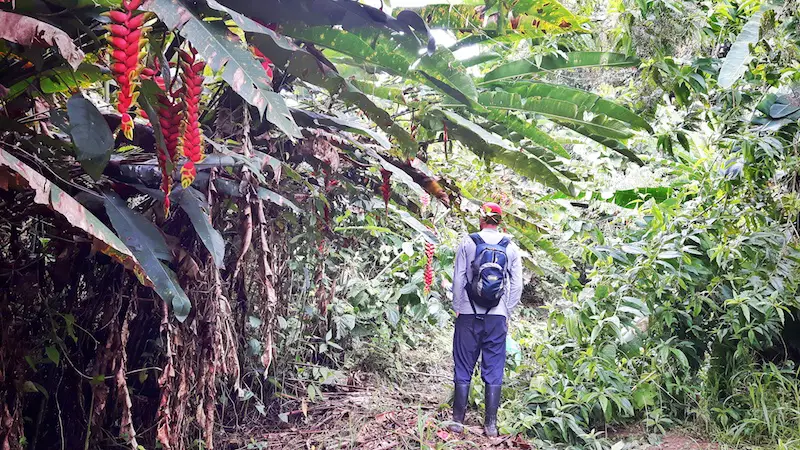
When is the Best Time for Amazon rainforest tours, Ecuador?
There really isn’t a bad time to explore Ecuador’s rainforest but the experience will change throughout the year.
Dry Season in the Ecuador Rainforest
December to February is a slightly drier and hotter time of year. This doesn’t mean it won’t rain, just that it will likely rain less. As the dry season continues, the water levels fall in the rivers in lakes.
More hiking trails on land become accessible making it easier to explore by foot. Animals such as caiman are more limited in their habitat area and may be easier to see while it becomes near impossible to see pink river dolphins.
If you’ve been dreaming of that sunset swim in Laguna Grande, don’t come at the end of the dry season. The lake is too dry and it becomes too dangerous to swim due to caimans and other wildlife. Groups are taken to a small beach area to swim instead.
Rainy Season in the Ecuador Amazon
From March to November it rains a lot more and is generally a little cooler. The level of the rivers and lakes rises and much of the forest becomes flooded.
While some hiking trails will be inaccessible, travel by boat is much easier during the wet season. As the water level rises, boats are much closer to the tops of the trees. This makes it much easier to see animals such as monkeys and sloths, and the birds.
We visited an Ecuador rainforest lodge near the end of March. The forest was flooded and the water level was rising each day. Most lodges are built on raised platforms as the ground beneath is prone to flooding. We woke each morning to a little more water on the ground. Some lodges’ docks were completely submerged.
It was really easy to see monkeys, sloths and birds in the trees, sometimes even at eye level. Our guide also explained (during our near wild boar attack), that land animals are limited to much smaller areas so they can be easier to find. Of course, this can make them more dangerous too.
We have no frame of reference but we would definitely recommend visiting while the forest floor is flooded. This doesn’t mean it has to be during the wet season, however, but perhaps not at the end of the dry season. Our guide told us there is only a month or so when the water levels are really low.
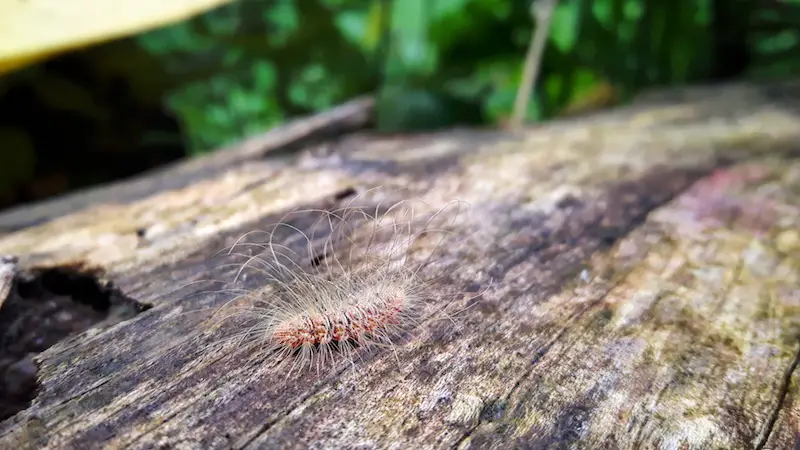
How to Get to the Amazon Jungle, Ecuador
Ecuador Amazon rainforest tours to Cuyabeno Reserve almost always begin and end in Lago Agrio (also called Nueva Loja). This means you need to get there before you can join your jungle tour.
Some higher-end lodges and tour agencies can help arrange the transportation but here are the basics:
Amazon tours from Quito
This is a popular option as Quito is the nearest major city to the Amazon region. People travel from Quito to Lago Agrio by one of three methods:
- Public bus – The journey takes around 7 hours and cost $8. It is a direct route and easy to navigate although you do have to get to the Quitumbe Bus Terminal south of the city first.
- Tourist bus – Private buses run this route from downtown Quito, making stops/pick-ups in La Mariscal and Centro Historico. This will cost $20.
- Plane – TAME runs daily flights between Quito and Lago Agrio. They leave Quito at 10 am and 4:30 pm on weekdays (one early afternoon flight on weekends) and return to Quito at 11:55 am and 5:55 pm most days. Flights take approximately 55 minutes. Prices vary greatly depending on the times chosen.
Amazon Tours from Baños
Baños is nicknamed the ‘Gateway to the Amazon’ so as you can imagine, there are many people that begin their Ecuador jungle tours here. Unfortunately, it’s not quite as easy to get to Lago Agrio (this is the route we took).
The only option is by public bus but there are a couple of different routes. Don’t believe anyone that tells you there is a direct bus to Lago Agrio. In every case you will have to switch buses, it’s just a question of where. We learned the hard way that the often recommended way may not be the best…
- Baños to Coca to Lago Agria – Almost every tour operator in Baños, as well as some blogs, recommended this route. Take the Baños to Coca night bus, which takes around 5-6 hours. Then switch buses in Coca for Lago Agrio, another 2 hours away. It was super easy as promised with a bus waiting just a few steps away when we reached Coca. The problem is that the bus switch comes at 4am so there is almost zero chance of getting any sleep.
- Baños to Ambato to Lago Agrio – Take a short bus ride to Ambato. The trick is to make sure you take a bus that goes to Ambato bus station as many will leave you on the road and you’ll need to find the station. From Ambato, you can take a direct bus to Lago Agrio. The benefit of this route is that the exchange comes very early in the journey before you are ready to sleep. We were told this was more complicated and a hassle but we wish we had gone this route in hindsight.
In both cases, you will need to take a taxi from the Lago Agrio bus station to your meeting point. For us, it cost $5.
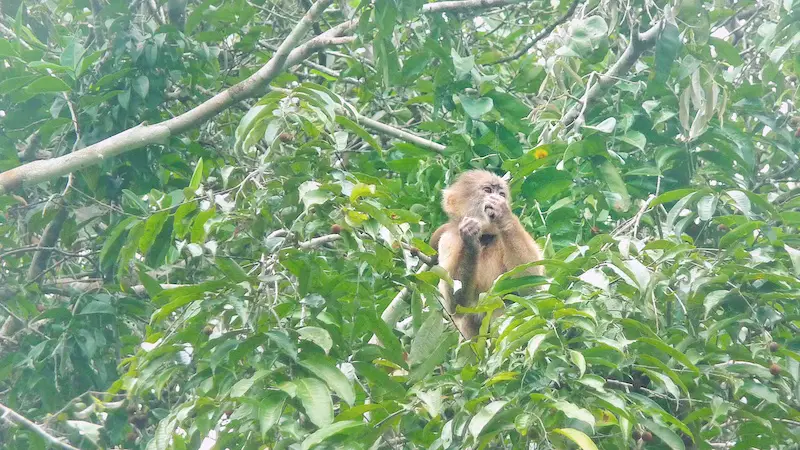
Personal Experience: Our Trip to the Amazon Rainforest, Ecuador
We started our trip to our Ecuador rainforest lodge from Baños. It was a long night on an uncomfortable couple of buses but our taxi delivered us to the meeting point in Lago Agrio with plenty of time to spare. A few lodges meet at the same restaurant/lodge and there is a breakfast waiting for those who want it (it cost around $3 each).
As we signed in, we realised we were the only ones for our lodge and as guides began to arrive we seemed to be the only ones left. Luckily, before we got too nervous, we were told to grab our bags and loaded into an old minivan.
It hadn’t stopped raining from the moment we left Baños so our driver stopped at a store for us to buy garbage bags for our backpacks. We then continued on the 1.5-hour journey to the bridge where the real adventure begins.
GOODBYE CIVILIZATION
Still pouring rain, we are transferred into a long canoe with a young guy for a driver. He straps up our backpacks and covers them with a tarp, then hands us heavy-duty ponchos for which we are very grateful. And we’re off!
As young as he is, he is clearly an expert with the boat as he weaves his way around tight bends and through narrow gaps between trees. Suddenly he stops and turns the boat around. Somehow, while navigating in the driving rain, he spotted some small squirrel monkeys in a tree.
After a few pictures, we continue on. He stops again when he somehow spots a sloth in another tree and points out a few more creatures along the way.
We later discovered that is from a local indigenous community so it is no wonder he is such an expert. Honestly, he may have been better than our actual official guide. Certainly together they didn’t miss much!
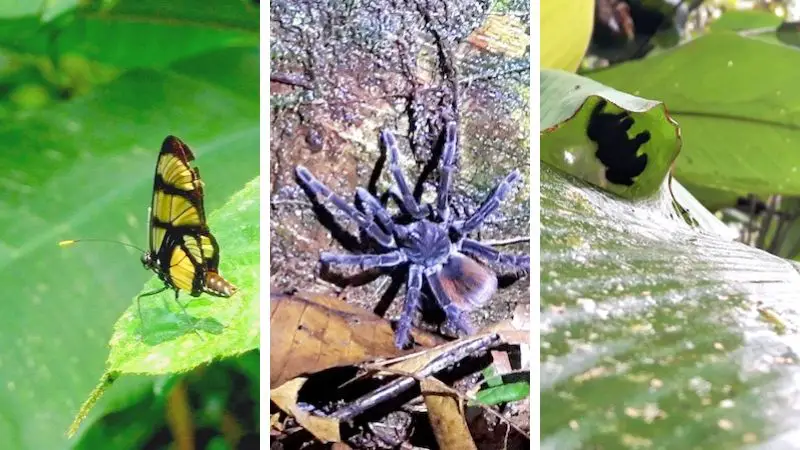
THE RAINFOREST LODGE
We stayed at Green Forest Lodge. It is a newer lodge on the banks of the Cuyabeno River. There are 6 rooms ranging from private doubles to dorms which are clean but rustic. The walls are made of thin branches bound together and there is a sizeable gap between walls and ceiling.
Insects in your room (cockroaches were plentiful…) are unavoidable but the netting over the bed meant that I was able to sleep without too much paranoia. If you are steadfastly against bugs in your room (perhaps skip the rainforest?) then you will want to book a higher end lodge such as Tapir Lodge.
The meals were huge with multiple courses. Somehow the cook managed to even provide something different for every meal. No small feat with such limited resources! I’m a picky eater – I basically eat like a 2-year-old – and yet I ate, and enjoyed, just about everything.
ECUADOR RAINFOREST TOURS
The majority of our first day was taken up by simply getting to the jungle lodge. While this sounds boring, this journey at the start and end of our tour was one of our favourite parts.
As soon as we arrived, we were assigned a cabin and given lunch. After some free time to settle in, everyone bundled into the long canoe and we headed off to Laguna Grande in time for one of the most gorgeous sunsets and an optional swim.
After the sun was gone, we were taken to a landing area and began a night hike. I lost count of how many times Nelson, our guide, told us to be careful of something dangerous. Thank goodness we had him!
The second day, everyone else at our lodge left leaving just us. We couldn’t believe our luck that we had almost two days of a private tour!
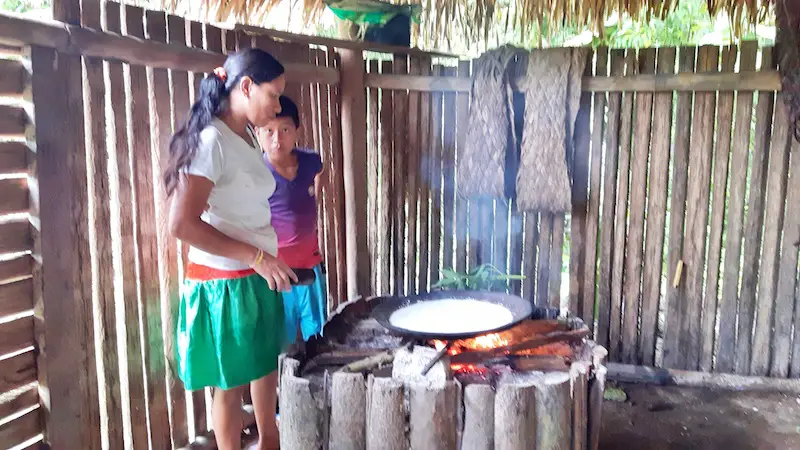
The day was supposed to include a visit to a local indigenous community to make cassabe bread and to the local shaman. Having heard it was a rather touristy thing, we asked to skip it. Nelson explained that the hike to the community alone was worth it but we could skip the shaman and he would take us on an extra river tour. Perfect!
The community was far from touristy and we were glad we got to see it. However, if you are expecting people in grass skirts and tribal paint you will be disappointed. The kids were running around in soccer jerseys and there were election posters hanging on the houses – not quite what we expected.
The third day saw us hopping in a paddle canoe with just our guide to a forest hike. We saw evidence of a large group of wild boar. Then we heard them. Terry and I were left following our guide as he started running uphill and searching for a tree to climb in case we were attacked.
It’s easy to feel as though you’re on some diluted ‘experience’ but this really brought home just how dangerous and secluded the jungle really is. Funnily enough, we hadn’t been asked to sign any kind of disclaimer before leaving – imagine that at home!
For those who choose the 5-day Amazon experience, the extra day provides more opportunities for wildlife spotting with boat rides and hikes in different areas.
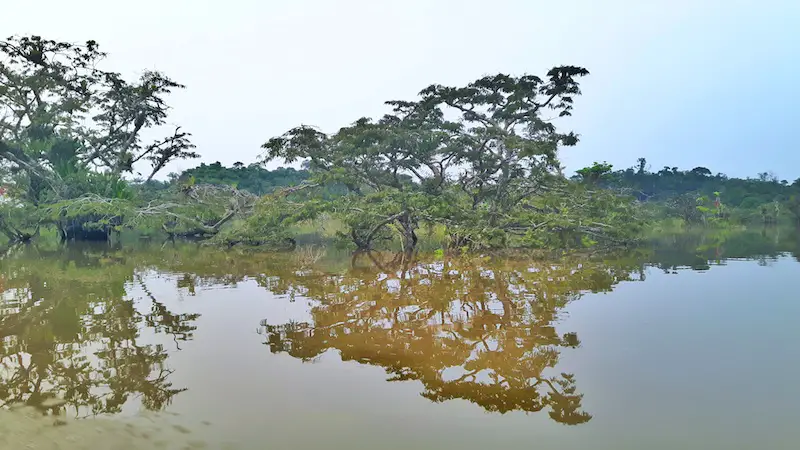
Is the Ecuador Amazon Rainforest Safe?
Lago Agrio is Spanish for Sour Lake which speaks volumes as to the damage the oil industry has done to the Amazon Rainforest in this area – and nature in general. The road followed a huge pipeline for hours.
Due to the industry here, as well as the proximity to the Colombian border, the town has a dangerous reputation. It is not recommended to spend more time than necessary here and not visit the area without a tour.
It had me wondering before our trip but once we got there it looked much like any other South American city. It’s got nothing to offer anyway, so dangerous or not, there’s no reason to spend any time here. We arrived at 6 am and took a taxi to the meeting point with no issues.
Once you are on your rainforest tour, the dangers are mostly nature-based. From dropping your camera to an attack of wild boars, anything could technically happen. Luckily, common sense and being careful will eliminate most of the risks.
We always have travel insurance just in case. World Nomads has been great to us, with good prices and prompt payouts, and cover a wide range of travel and health issues. It’s definitely a must have in such a remote location. Get a quote now.
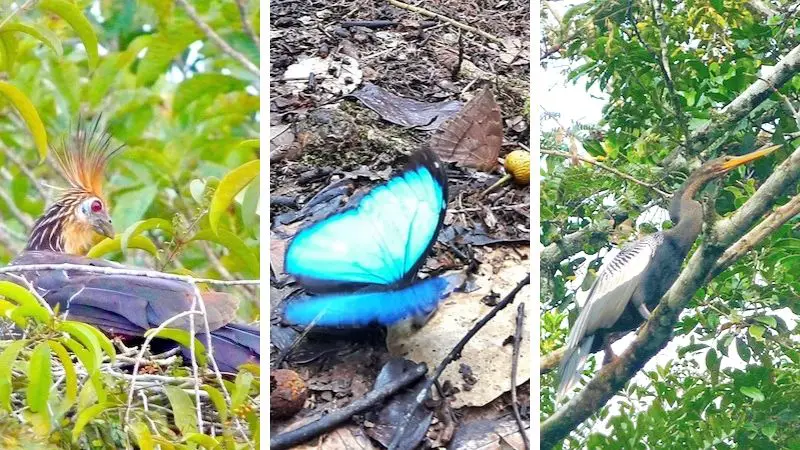
We had an incredible adventure on our Amazon trip. Ecuador really is the country that keeps on giving. There really is no way to do it wrong, but there are definitely a few factors to consider to make it the best experience possible.
Did you find this post helpful? Please consider saving it for easy reference!
